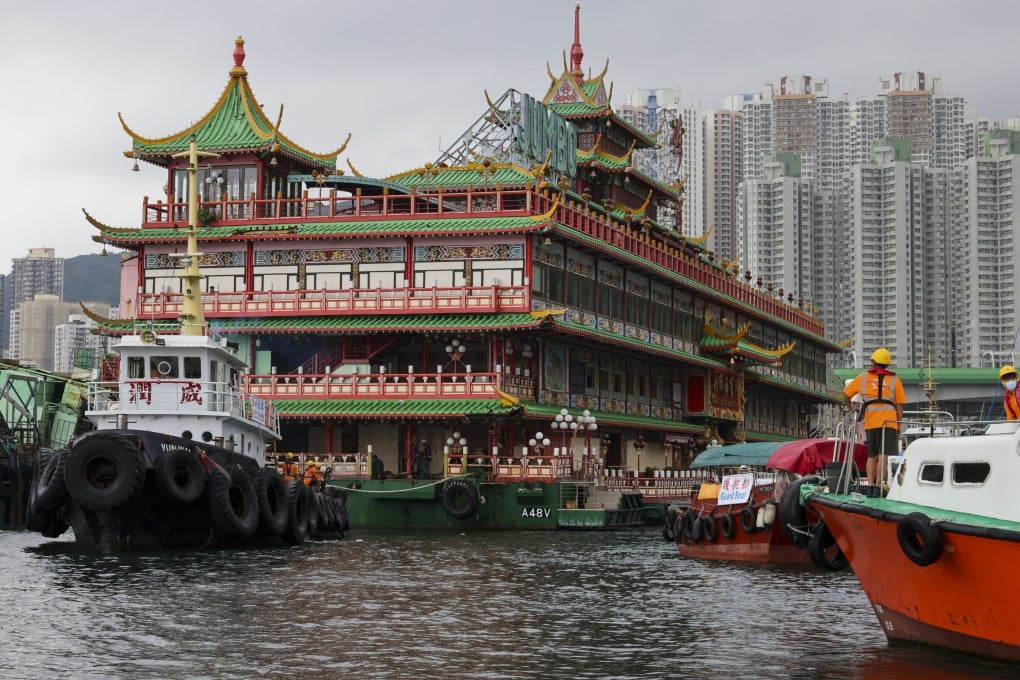Advertisement
Opinion | The sinking of Hong Kong’s Jumbo Floating Restaurant – bane or blessing?
- Kate Whitehead laments the demise of a cultural icon of Hong Kong
- Ed Peters argues the bottom of the South China Sea is the best place for the Jumbo Floating Restaurant
Reading Time:3 minutes
Why you can trust SCMP
8

When Hong Kong does finally open up to tourists it’s going to have to reshoot the postcards – because its world-famous attractions are fast disappearing. Last month we mourned the Star Ferry (it is surviving, barely) and now it’s the turn of flamboyant eatery the Jumbo Floating Restaurant.
I had an uneasy feeling watching it being tugged out to sea. After haemorrhaging cash for a couple of years, the owners were moving it to an undisclosed location. They refused to be drawn on where they were taking it and then – quelle surprise – it sinks en route to nowhere.
We can only speculate as to the circumstances, but one imagines a tug master inspects a tow before departure to ensure it is fit for the voyage. Losing it to the bottom of the South China Sea avoids the huge cost of scrapping it and environmental recycling. And you have to wonder about the insurance payout.
Advertisement
Opened in 1976 by casino tycoon Stanley Ho Hung-sun, the world’s biggest floating restaurant was bold, brash and demanded attention. It was a massive pull for tourists and in its heyday, visited by Queen Elizabeth, Elizabeth Taylor, Jimmy Carter and Tom Cruise along with just about everyone else who came to Hong Kong.

Let’s be frank, the food wasn’t phenomenal. You went for the spectacle – the neon lights and gold trim, the ferry ride there, photos and bragging rights. Most locals went only once, to check it out, but that didn’t mean they didn’t love it – it was part of the landscape, a cultural icon.
Advertisement
Advertisement
Select Voice
Choose your listening speed
Get through articles 2x faster
1.25x
250 WPM
Slow
Average
Fast
1.25x

